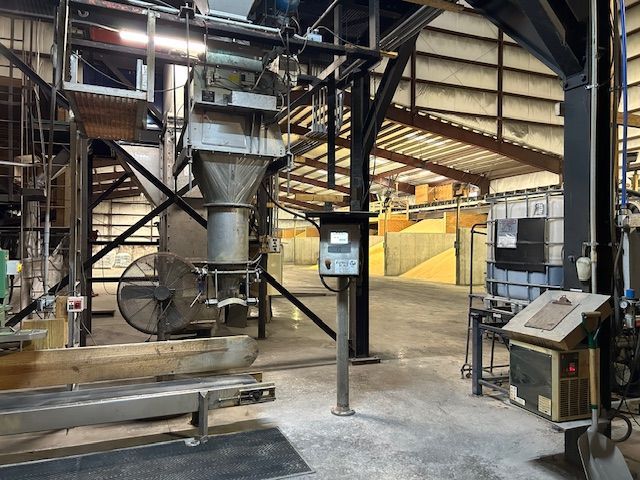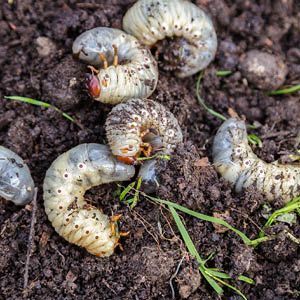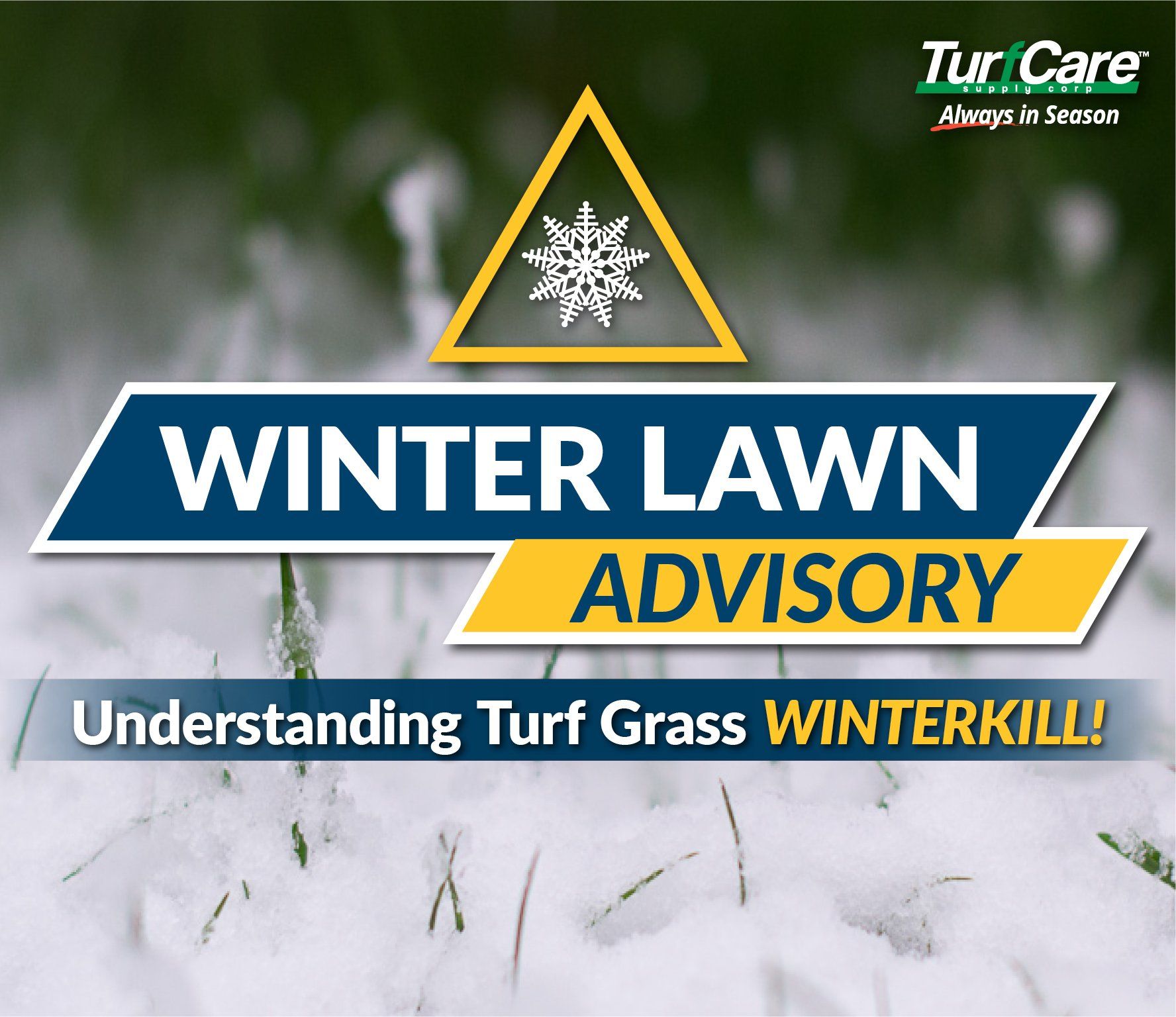A major concern for green industry professionals is damage or loss of turf grass due to colder winter weather. As the temperature outside drops, you may be worried about your turf experiencing harm from these harsher seasonal conditions like winterkill. What’s amazing about turf grass is that it naturally tries to prepare and adapt to winter to prevent damage or death. This preparation for cool weather is called cold acclimation. This term refers to turf grasses' ability to make changes to help it tolerate lower temperatures and prevent ice accumulation in plant cells (ice accumulation can result in cells rupturing which injures the plant). During the cold acclimation process of turf grass, it accumulates certain sugars and proteins to create a cell wall that becomes more fluid and allows for plant cells to dehydrate in order to become hardier over winter. Colder winter weather brings challenges for both cool season and warm season turf grass. Although both species have the ability to prepare themselves for winter, there are still multiple factors that may arise that can cause damage or even death to turf.
WHAT IS WINTERKILL?
Winterkill is an all-inclusive term that is used to describe the various causes of turf loss over the cool winter months. Winterkill can happen due to a combination of factors including low-temperature kill, ice sheets, desiccation, crown hydration, and disease.
LOW-TEMPERATURE KILL
Extreme cold can produce the winterkill problem known as the low-temperature kill. Low-temperature kill can happen on two different levels; on the surface and below the surface. Low temperature kill above the surface is caused by ice crystal formation on plant cells at temperatures below 32˚F. The ice accumulation can result in plant cells rupturing which ultimately can cause injury and even death to the plant. Above the surface, low-temperature kill is more likely to happen prior to below surface low-temperature kill. Soil temperatures fluctuate less than air temperatures, insulating the crown (the growing point) of the plant and its roots from winter temperatures. Unfortunately, soil temperature can still drop to a point where damage is done below the surface parts of the plant.
Another issue that can lead to low-temperature kill and interfere with turf grass winter survival is the freeze/thaw cycle. When freezing and thawing happens rapidly throughout the winter months, damage can increase because there is more stress to the plant.
ICE SHEETS
Ice sheets or ice accumulation on turf grass can result in plant death if left on turf for a sustained period of time. Different turf grass species have different hardiness to ice sheet build up, for example, annual bluegrass experiences damage between 45-90 days of ice accumulation while creeping bentgrass can withstand ice until 90-120 days before plant death occurs. Ice sheets cause death because it prevents gas exchange, increasing carbon dioxide to toxic levels.
DESICCATION
Desiccation, also known as winter drought, is the term used to describe turf grass death due to drying out over the course of winter when the grass is dormant or semi-dormant. Desiccation is more likely to appear in areas where soil was dry prior to entering winter or where there has been little snow precipitation or cover throughout the cool winter months.
- NOTE: In regions where drought occurs regularly throughout the season, desiccation is more likely to be prominent (i.e. the Dakotas, Kansas, Nebraska and others).
CROWN HYDRATION
Crown hydration injury occurs during the warmer days of winter when temperatures increase enough that turf grass awakes from dormancy and begins to take up water again. Damage happens when a day or two of warm daytime temperatures arrive, followed by the continuation of freezing temperatures. Damage or death to turf happens because of ice crystallization forming within the plant, causing stress and rupturing to the plant's cells. Crown hydration commonly takes place during late winter/early spring when snow or rain occurs and then freezing temperatures return but the melted snow or rain has not fully drained away.
- PRO TIP: Cool season grasses are especially susceptible to crown hydration injury since they’re more likely to awake from winter dormancy at the first break of warmer temperatures.
DISEASE
The most common two diseases caused from winterkill is snow mold; gray and pink snow mold. Areas of turf grass that appear to be “glued” together, pale yellow in color and have a straw-like quality may be affected by snow mold. Although snow mold doesn’t occur every year, it is not uncommon to find it in turf grass in years when early and deep snow prevented the ground from freezing. The fungal growth from snow mold can cause winterkill injury, causing grass to take a little longer to green up.
Spring dead spot (SDS) is another common winter kill fungal disease in the warm season species, bermudagrass (although less common, spring dead spot can be found in zoysiagrass). This disease can be identified by its well-defined circular patches of bleached out, dead turf. This disease can become evident when turf begins to green-up in spring. This is a destructive, persistent disease that happens when turf is exposed to freezing temperatures for extended periods of time. The fungi of SDS are active in fall and spring when conditions are cool and moist. The fungi don’t actually kill turf directly but instead weakens the turf by feeding on grass roots, rhizomes, and stolons, making it more susceptible to winterkill injury. SDS fungi can infect turf anywhere from temperatures above 50° F to below 70°F.
Spring Dead Spot Fungal Disease
RECOVERING FROM MODERATE - SEVERE WINTERKILL
Unfortunately, winterkill damage cannot be fully assessed until turf grass goes through its spring green-up and warmer weather returns. If spring arrives and you notice some damage from winterkill, sodding or seeding may be necessary to help with turf grass recovery. Prior to seeding it is crucial to understand your region and which grasses will thrive.
*IMPORTANT* NEVER USE A PRE-EMERGENT HERBICIDE WHILE SEEDING/SODDING. PRE-EMERGENT HERBICIDES WILL KILL GERMINATING GRASS SEEDS.
Predicting winterkill is not something you can always forecast since a variety of winterkill damage is caused by seasonal factors out of our control. By choosing a thriving and adaptable turf grass species and maintaining good turf care practices, turf grass can avoid winterkill and defend itself against the cool, harsher winter weather.
Winterkill prevention on turf can be helped with a healthy, dense turf and a strong root system with a regular lawn care routine including fertilization, soil amendments, proper mowing and watering as well as aeration and thatch management practices. It is also extremely helpful to take the necessary steps to “winterizer” your lawn for a hardier winter lawn and a quick spring green-up".
For professional fertilizers, humic and AMP-XC™ enriched products available, please visit TurfCare’s online Product Catalog.
For green industry professionals or others interested in ordering Turfcare products, please contact our Customer Service
to find a distributor near you.
References:
https://www.sportsfieldmanagementmagazine.com/columns/turf-health/protect-turfgrass-winter-damage/
https://www.sportsfieldmanagementmagazine.com/maintenance/winter-weather-forecasting-field-management/
http://plantscience.psu.edu/research/centers/turf/extension/factsheets/cool-season
http://purdueturftips.blogspot.com/2014/03/cool-season-turf-winterkill-potential.html
http://msue.anr.msu.edu/resources/winterkill-of-turfgrass
http://purdueturftips.blogspot.com/2014/03/warm-season-turf-winterkill-2014-what.html
https://www.extension.umn.edu/garden/yard-garden/lawns/snow-molds-in-lawns/
http://extension.uga.edu/publications/detail.html?number=C1012
https://www.clemson.edu/extension/hgic/hot_topics/2016/pdf/09%20preparing_managing_warm_season_grasses_during_the_offseason%202%20col.pdf
Photos:
http://extension.uga.edu/publications/detail.html?number=C1012
Turf Care Supply - TurfReport Blog

Turf Care Supply, LLC, a portfolio company of Platte River Equity, has officially acquired Beaty Fertilizer, the industry respected Tennessee-based manufacturer and blender of custom granular and liquid fertilizers, as well as combination products. This strategic move expands Turf Care’s manufacturing footprint, adds new product capabilities, and enhances overall production capacity. “The partnership with Beaty Fertilizer marks a major milestone in our journey and an important step forward in our mission to grow, innovate and lead in our industry,” said Mark Mangan, President of Turf Care. “This acquisition is more than just expansion; it’s a powerful opportunity to strengthen our product offerings, broaden our market reach and provide greater value to our customers. By welcoming Beaty into the Turf Care family, we are reinforcing our commitment to excellence and positioning ourselves for an even brighter future.” “We are excited about this next step in the Beaty Fertilizer story. For almost 50 years, our family and our employees have worked hard to serve customers and communities with pride and heart,” said John Beaty, President of Beaty. “Now, we are embracing an opportunity for growth with Turf Care. With our combined know-how and resources, we’ll keep building on what we’ve worked so hard to create and bring even more value to our customers, employees and partners. We truly believe this partnership will keep the Beaty legacy going strong while opening up new doors for growth and innovation.” Tarun Kanthety, Vice President at Platte River, added, “We believe the acquisition of Beaty Fertilizer represents a strategic step in expanding Turf Care’s footprint and product breadth... as it scales and enhances its value proposition to customers.”

Root out Grubs, Before they Attack Yours! White grubs, the immature stage of several scarab beetles—including Japanese beetles, masked chafers, May and June beetles, and green June beetles—are a major threat to turfgrass across the Southeast. These beetles follow a complete metamorphosis (egg, grub, pupa, adult), with most species completing their cycle in one year. Eggs are laid in early summer, grubs hatch within two weeks, and begin feeding on turfgrass roots through the late summer and fall. May and June beetles differ slightly, with a two- to three-year life cycle and prolonged feeding as third-instar grubs. Grubs damage turf by severing roots, causing grass to yellow, wilt, or lift easily from the soil. Feeding is typically concentrated in patches and worsens during hot, dry weather. Wildlife digging for grubs can create further turf destruction. Healthy turf may tolerate 5–10 grubs per square foot, but damage becomes evident as populations rise or turf is under stress. Early detection and timing are essential. Scouting begins in late June, shortly after adult beetle activity peaks. Monitoring plants favored by beetles can signal egg-laying is underway. Treatment is most effective when small grubs are active—typically from mid-July through early August. For professional turfgrass managers, insecticides containing imidacloprid (Merit®), chlorantraniliprole (Acelepryn®), or trichlorfon (Dylox®) are the most effective tools. The primary months of preventative application of Acelepryn® is from April to end of May and Merit® from April into July - targeting grubs before they hatch. Curative treatments with Dylox® or similar products are applied July through the fall, when young grubs are feeding and most vulnerable. Always follow label directions for optimal application and safety. Timing may vary slightly by regional seasonal needs. Turf Care Supply has a variety of professional TCS Growstar insecticide fertilizers available to protect your turf and prevent grub damage, before it starts. Click on the button below to view products, contact your sales rep for addition TC Growstar products available.

Platte River Equity Portfolio Company Turf Care Supply, LLC Acquires Agri-Nutrients, Inc. Brunswick, OH , October 9, 2024 – Platte River Equity (“Platte River”) portfolio company Turf Care Supply, LLC (“Turf Care”) is pleased to announce its acquisition of Agri-Nutrients, Inc. (“Agri-Nutrients”), a manufacturer and blender of custom granular fertilizers for the turf & ornamental (“T&O”) industry. This strategic acquisition provides Turf Care with an established presence in the south-central United States, an enhanced product portfolio and additional manufacturing capacity. “This acquisition represents much more than a business transaction; it is a strategic step forward in expanding our reach and enhancing our customers’ growth. By bringing Agri-Nutrients into the Turf Care family, we are broadening our product portfolio, expanding our market presence and further positioning ourselves as a leader in providing innovative solutions for our customers,” said Mark Mangan, President of Turf Care. “We are excited about joining the Turf Care team,” said Jim Montgomery, President of Agri-Nutrients. “At Agri-Nutrients, our core values center around customer service and product innovation, and we are confident that this combination will allow us to better serve the needs of our customers.” “Platte River welcomes the Agri-Nutrients team to Turf Care. This transaction underscores our long-term commitment to fostering growth through both organic and inorganic initiatives across the Turf Care platform,” said Tarun Kanthety, Vice President of Platte River. “The partnership with Agri-Nutrients strengthens Turf Care’s value-added offering, creating additional growth opportunities across the combined customer base.” B&A Corporate Advisors served as the exclusive financial advisor to Agri-Nutrients. About Agri-Nutrients Founded in 1992 and based in Catoosa, OK, Agri-Nutrients is a manufacturer and blender of custom granular fertilizers for the T&O industry, predominantly selling into the lawn care, sports turf and golf course end markets. About Turf Care Supply Established in 1974, Turf Care Supply is one of the largest formulators and blenders of urea products to the T&O market. Turf Care has a comprehensive product portfolio of fertilizers, combination products (herbicide/insecticide), soil amendments and enhanced efficiency fertilizer ingredients. Turf Care's products are sold to distributors and blenders serving the commercial, residential and golf end markets. Turf Care operates four manufacturing facilities strategically located throughout the eastern U.S. About Platte River Equity Founded in 2006 and based in Denver, CO, Platte River Equity is a private equity firm focused on investments in established lower middle market operating companies within targeted industrial sectors where it has substantial operating and investing experience. Platte River utilizes prudent capital structures in order to invest in future growth opportunities and withstand changing economic environments. The firm also provides significant ongoing support to its portfolio companies through dedicated resources across functional areas. The firm has raised funds with committed capital in excess of $1.6 billion and is currently investing out of its fifth fund. The Platte River team is the largest collective investor across its funds, deeply aligning the firm with its investors and portfolio company management teams.


